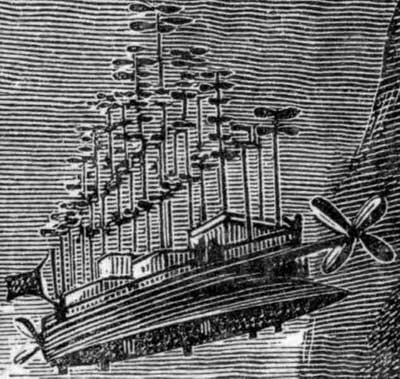- Joined
- 13 August 2007
- Messages
- 8,456
- Reaction score
- 11,036
Jules Verne was a Genius
with books like "Twenty Thousand Leagues Under the Sea" and submarine "Nautilus"
in "Robur the Conqueror" published in 1886
feature the "Albatross" a Airship equip with 37 vertical propellers.
the Albatross can be see as precursor to Helicopter
but how look and work a realistic version of "Albatross" ?
of course less vertical propellers, but were the engine in 1886 powerfull enoff for liftoff ?
with books like "Twenty Thousand Leagues Under the Sea" and submarine "Nautilus"
in "Robur the Conqueror" published in 1886
feature the "Albatross" a Airship equip with 37 vertical propellers.
the Albatross can be see as precursor to Helicopter
but how look and work a realistic version of "Albatross" ?
of course less vertical propellers, but were the engine in 1886 powerfull enoff for liftoff ?






